The Soyuz rocket is rolled out to the launch pad by train, on Sunday, October 21, 2012, at the Baikonur Cosmodrome in Kazakhstan. Credit: NASA/Bill Ingalls.
Expedition 33/34 NASA Flight Engineer Kevin Ford, Soyuz Commander Oleg Novitskiy and Flight Engineer Evgeny Tarelkin are scheduled to launch in their Soyuz TMA-06M spacecraft at 10:51 UTC (6:51 a.m. EDT) on Tuesday, Oct. 23, from the Baikonur Cosmodrome in Kazakhstan. Also on board will be 32 medaka fish, which will become space station residents in a zero-gravity research aquarium. Yesterday the Soyuz was rolled out the launchpad, and this launch will take place from a different launch pad than usual, site 31. This will be the first manned launch from Site 31 since July 1984 when the Soyuz T-12 spacecraft carried three cosmonauts to the Russian Salyut 7 space station. The launchpad that is normally used is being upgraded.
See a gallery of images from the rollout, below.
The Soyuz rocket is rolled out to the launch pad by train. Credit: NASA/Bill Ingalls
No smoking! Credit: NASA/Bill Ingalls
The Soyuz is raised to the upright position on the launchpad. Credit: NASA/Bill Ingalls
The train engineer hangs out the window. Credit: NASA/Bill Ingalls
Pad workers install a safety railing at the launch pad. Credit: NASA/Bill Ingalls
The Expedition 33 backup crew, NASA astronaut Chris Cassidy (left), Russian cosmonaut Pavel Vinogradov and Russian cosmonaut Alexander Misurkin, right, are photographed in front of the Soyuz rocket shortly after it arrived at the launch pad. Credit: NASA/Bill Ingalls
Workers climb up to the Soyuz rocket after it was erected at the launch pad. Credit: NASA/Bill Ingalls

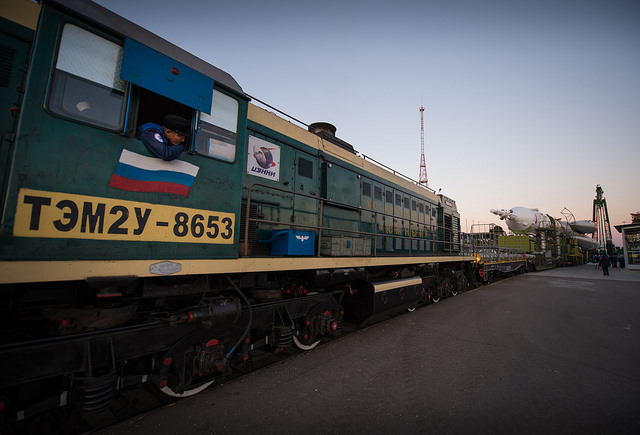
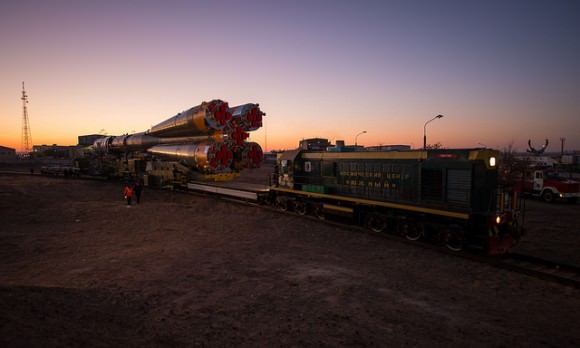
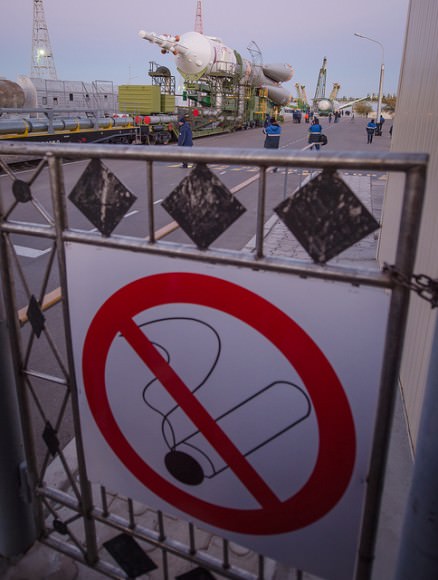
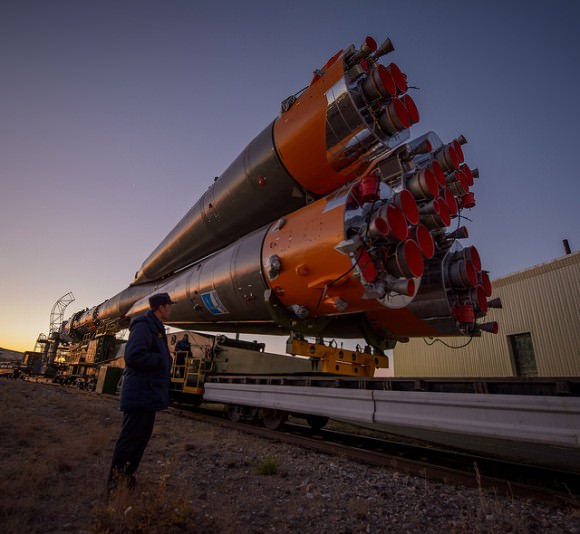
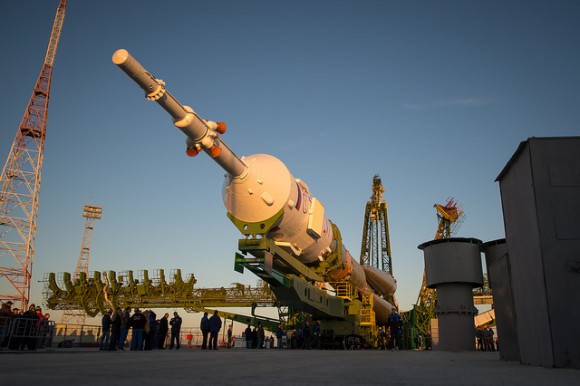
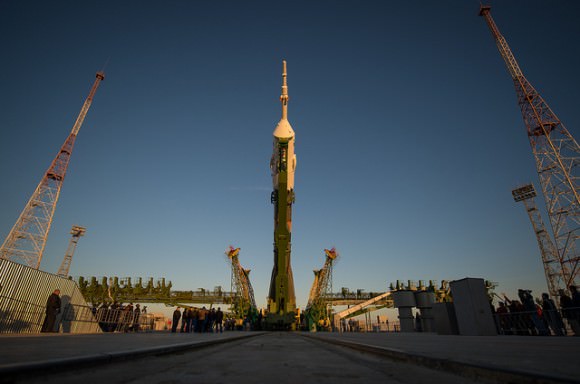

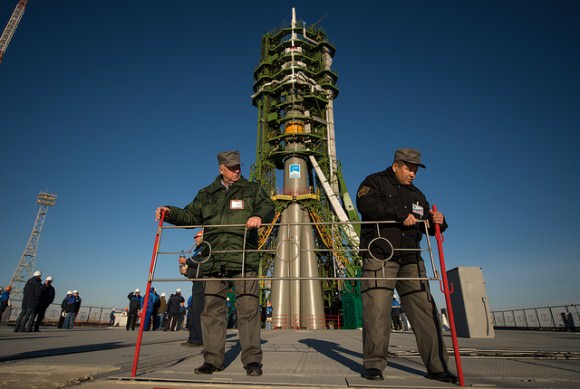
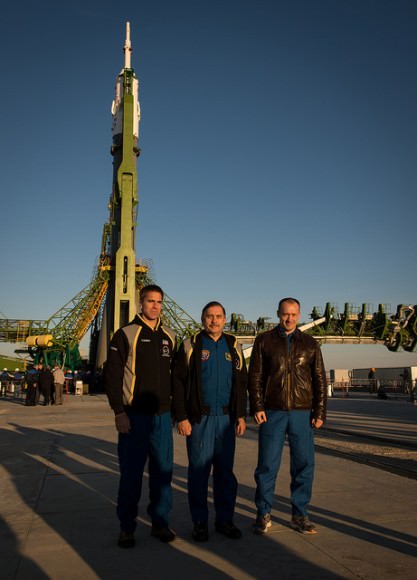
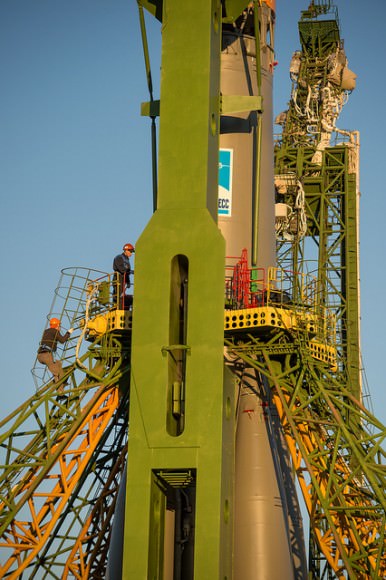
Good ol’ reliable technology, even though it is decades old technology. Proud and resolute Russians helping out Americans and continuance of missions to the ISS. Augurs well for international relations. More stories like this one please….
Yeah, helping out with an ever increasing price…
Ferengi Rule of Acquisition #21: Never place friendship before profit.
Jewish sympathetic Americans… Gotta love that!!
… or never being able to get to LEO.
Which is preferable?
as someone who followed vibrant, aggressive NASA in their 60s quest for the moon, the use of “decades old technology” confined just to Low Earth Orbit, makes me very sad.
I wonder why Soviet launchpads looks so different to launchpads in all other countries!
The Baikonur launch site is prone to windstorms, and assembling the rocket in a verticle position would’ve required a high-rise hanger, which, during the Soviet era, was not economically feasible, so it is constructed in a horizontal postion instead. The assembled rocket is transported to its launch site and then raised; it is held in place with four launch system trusses to bear the wind loads on the rocket until it is safe to launch.